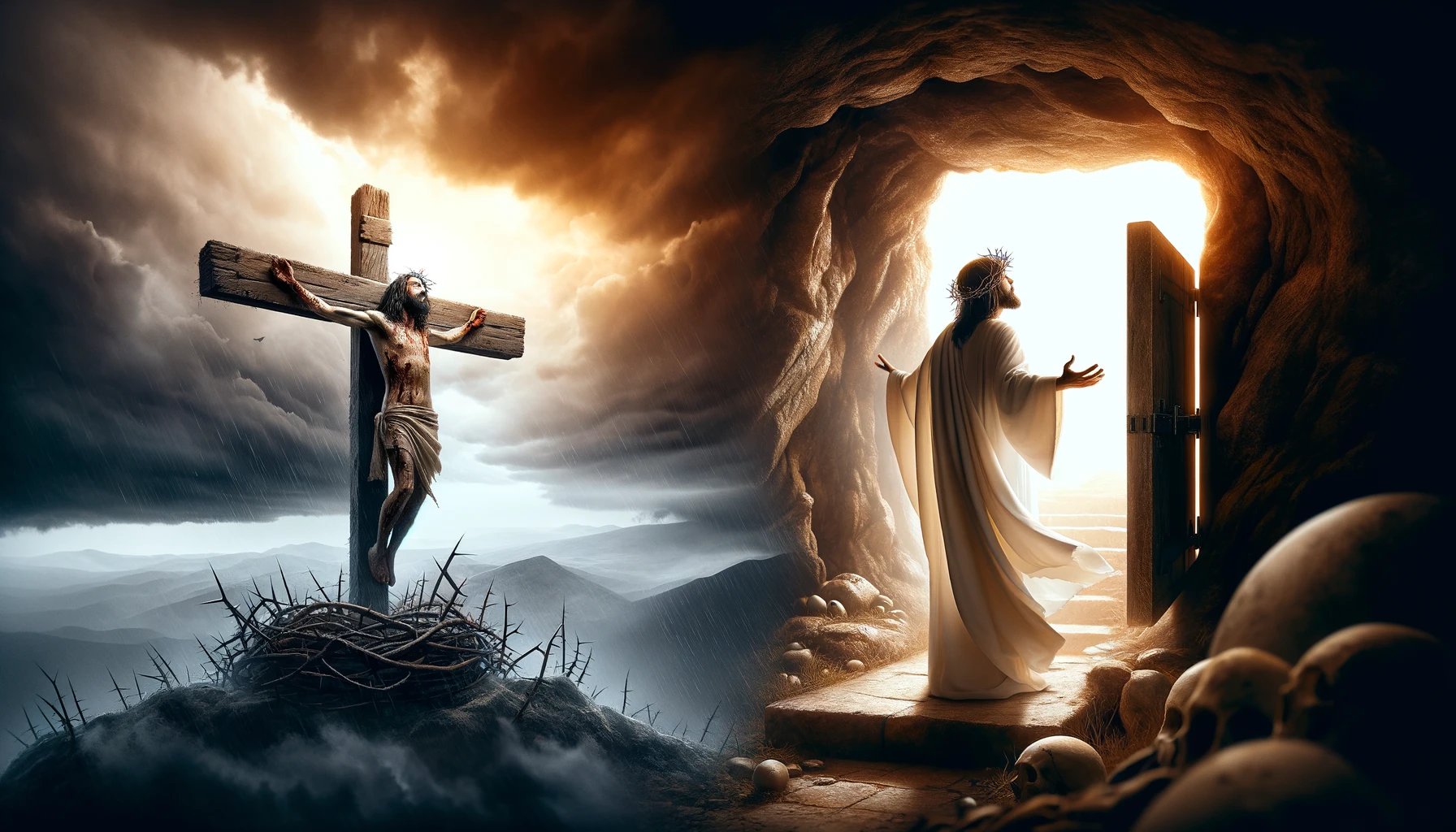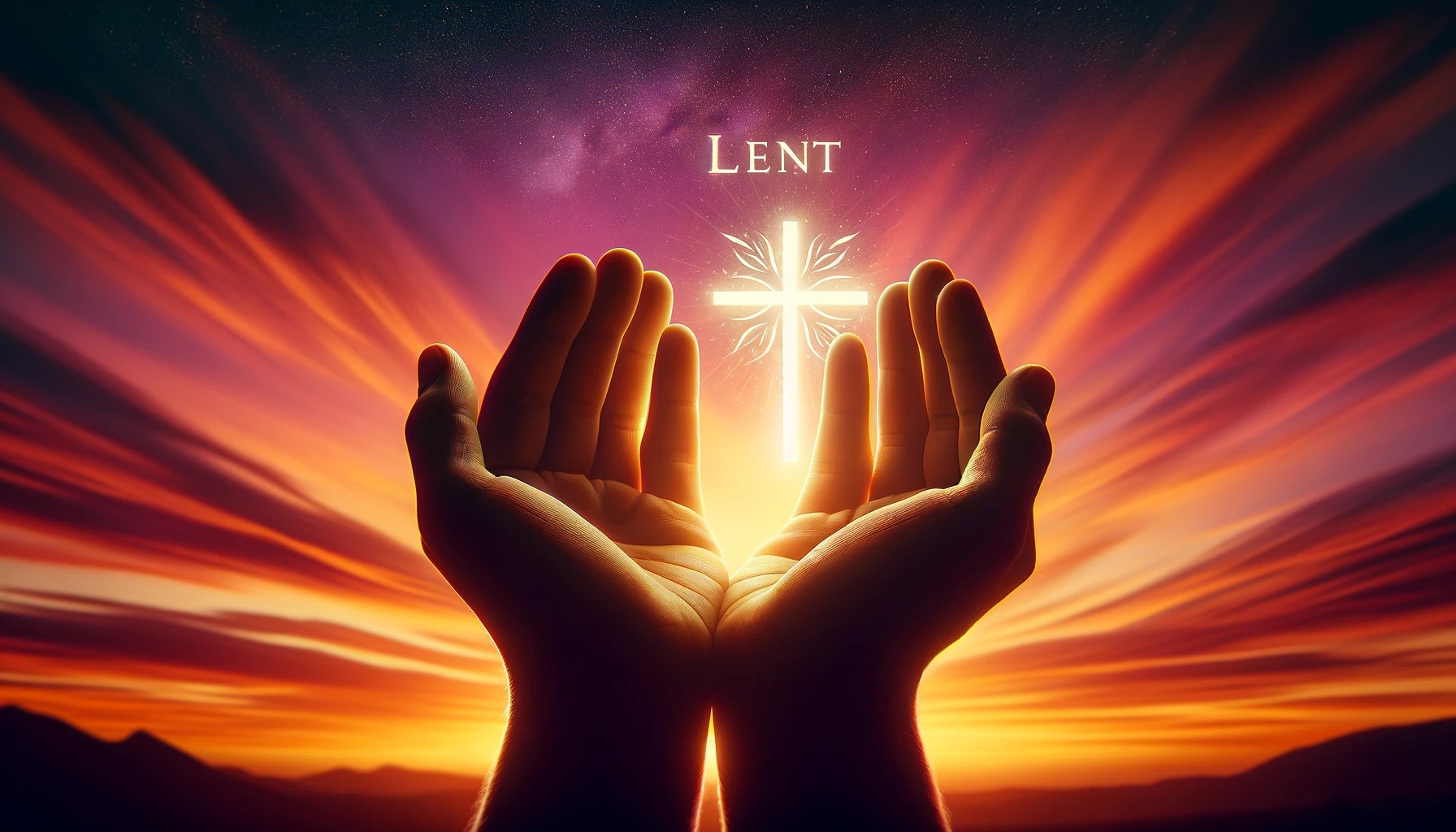Home>Special Themes>What Is Lent About In Catholicism?


Special Themes
What Is Lent About In Catholicism?
Published: February 27, 2024
Jason DeRose, Managing Editor at Christian.net, uses his expertise in religion and journalism to deepen understanding of faith's societal impacts. His editorial leadership, coupled with a strong academic background, enriches the platform’s diverse content, earning him recognition in both journalism and religious circles.
Discover the significance of Lent in Catholicism and its special themes. Explore the traditions and practices associated with this sacred period.
(Many of the links in this article redirect to a specific reviewed product. Your purchase of these products through affiliate links helps to generate commission for Christian.net, at no extra cost. Learn more)
Table of Contents
The History of Lent in Catholicism
Lent has been an integral part of Catholic tradition for centuries, with its origins dating back to the early days of the Church. The word "Lent" itself comes from the Old English word "lencten," which means spring. The observance of Lent can be traced back to the 4th century, making it one of the oldest and most significant traditions in Catholicism. Initially, Lent was a period of preparation for new converts to Christianity, who would be baptized during the Easter Vigil. Over time, the practice of Lent evolved to include all members of the Church, serving as a time of spiritual renewal and preparation for the celebration of Easter.
-
Early Christian Practices: In the early centuries of Christianity, Lent was observed as a period of fasting and penance. The duration of Lent varied among different Christian communities, with some fasting for one day, while others observed a 40-hour fast. The Council of Nicaea in 325 AD played a crucial role in standardizing the observance of Lent, establishing the 40-day period of fasting and penance as a preparation for Easter.
-
Biblical Roots: The 40-day duration of Lent is symbolic and has its roots in the Bible. It mirrors the 40 days that Jesus spent fasting in the wilderness, as recounted in the Gospels of Matthew, Mark, and Luke. This period of fasting and temptation prepared Jesus for his public ministry, and similarly, Lent serves as a time of spiritual preparation and self-examination for Catholics.
-
Evolution of Lenten Practices: Over the centuries, the observance of Lent has undergone various changes and adaptations. The focus on fasting, prayer, and almsgiving became central to the Lenten season, reflecting the spiritual disciplines practiced by Jesus during his time in the wilderness. The 40-day period also aligns with other significant periods of 40 days found in the Bible, such as the 40 days of rain during the story of Noah's Ark and the 40 years of the Israelites' wandering in the desert.
-
Modern Observance: Today, Lent remains a time of spiritual reflection, repentance, and renewal for Catholics around the world. It is a period marked by prayer, fasting, and acts of charity, as believers seek to deepen their relationship with God and grow in their faith. The historical significance of Lent underscores its enduring importance in the life of the Catholic Church, serving as a time for believers to draw closer to God and prepare their hearts for the joyous celebration of Easter.
Read more: What Is Lent All About?
The Purpose of Lenten Practices
-
Spiritual Renewal: Lenten practices serve as a time of spiritual renewal and growth for Catholics. Through the disciplines of fasting, prayer, and almsgiving, believers are invited to refocus their hearts and minds on their relationship with God. This period offers an opportunity for introspection, repentance, and a deepening of faith, as individuals seek to align their lives more closely with the teachings of Jesus Christ.
-
Preparation for Easter: Lent is a season of preparation for the celebration of Easter, the most significant event in the Christian calendar. By engaging in Lenten practices, Catholics prepare themselves to fully participate in the joy of Christ's resurrection. The 40-day period allows for a deliberate and intentional journey towards Easter, enabling believers to appreciate the profound significance of this holy season.
-
Self-Discipline and Sacrifice: Lenten practices, particularly fasting and abstinence, emphasize the importance of self-discipline and sacrifice in the Christian life. By voluntarily giving up certain comforts or indulgences, individuals are reminded of the selfless sacrifice of Jesus on the cross. This self-denial fosters a spirit of humility and detachment from material desires, leading to a greater reliance on spiritual sustenance.
-
Solidarity with the Poor and Needy: The Lenten season encourages acts of charity and almsgiving as a means of expressing solidarity with the less fortunate. By sharing resources with those in need, Catholics embody the compassionate love of Christ and recognize the inherent dignity of every person. This practice of generosity and service reflects the Christian call to love one's neighbor and care for the marginalized in society.
-
Renunciation of Sin: Lent provides an opportunity for believers to confront their own weaknesses and sins, seeking reconciliation and forgiveness. Through the sacrament of reconciliation, Catholics acknowledge their need for God's mercy and grace, embracing the season as a time to turn away from sin and embrace a life of holiness. The Lenten journey thus becomes a period of spiritual purification and inner transformation.
-
Cultivation of Virtue: Engaging in Lenten practices cultivates virtues such as patience, perseverance, and compassion. The intentional commitment to prayer, fasting, and almsgiving fosters a spirit of perseverance in the face of challenges, patience in awaiting the fulfillment of God's promises, and compassion towards others. These virtues are essential for spiritual growth and are honed through the Lenten disciplines.
In essence, the purpose of Lenten practices is to foster a deeper spiritual life, prepare for the celebration of Easter, embrace self-discipline and sacrifice, express solidarity with the marginalized, seek reconciliation and forgiveness, and cultivate virtues essential to the Christian journey. This season offers a profound opportunity for Catholics to grow in faith, love, and service, ultimately drawing closer to the heart of God.
The Significance of Ash Wednesday
-
Commencement of Lent: Ash Wednesday marks the commencement of the Lenten season, a period of spiritual reflection and preparation for the celebration of Easter. It falls 46 days before Easter Sunday and is observed by Catholics worldwide as a solemn day of fasting, abstinence, and repentance.
-
Imposition of Ashes: One of the central rituals of Ash Wednesday is the imposition of ashes on the foreheads of the faithful. The ashes, typically derived from the burning of palm branches blessed on the previous year's Palm Sunday, serve as a powerful symbol of mortality and penitence. As the priest applies the ashes in the form of a cross on each person's forehead, the words "Remember that you are dust, and to dust you shall return" or "Repent and believe in the Gospel" are spoken, reminding individuals of their finite existence and the need for spiritual renewal.
-
Public Declaration of Faith: The act of receiving ashes on Ash Wednesday is a public declaration of one's faith and a visible sign of one's commitment to the Lenten journey. It serves as a reminder to both the recipient and those who witness the ritual of the call to repentance and the invitation to embrace the transformative power of God's love and mercy.
-
Symbol of Humility and Contrition: The ashes symbolize humility and contrition, prompting individuals to acknowledge their own mortality and sinfulness. By wearing the ashes throughout the day, Catholics bear witness to their willingness to turn away from sin and embrace a life of holiness. The visible mark of the cross serves as a personal and communal expression of the desire for spiritual purification and reconciliation with God.
-
Preparation for Easter: Ash Wednesday sets the tone for the Lenten season, inviting believers to embark on a journey of self-examination, prayer, and acts of charity. The somber and reflective nature of the day encourages Catholics to consider the areas of their lives that require repentance and renewal, preparing their hearts to fully participate in the joy of Christ's resurrection on Easter Sunday.
-
Call to Conversion: The observance of Ash Wednesday calls individuals to a conversion of heart and a recommitment to living out the Gospel message. It serves as a poignant reminder of the need to turn away from sin, embrace the mercy of God, and strive for a life of holiness. The ashes symbolize the transformative power of God's grace, inviting believers to embrace a renewed relationship with God and a deeper commitment to following the teachings of Jesus Christ.
In summary, Ash Wednesday holds profound significance in the Catholic faith, serving as a solemn and transformative day that marks the beginning of the Lenten season. Through the imposition of ashes, Catholics are reminded of their mortality, called to repentance, and invited to embrace the spiritual disciplines of Lent as they prepare to commemorate the resurrection of Jesus Christ on Easter.
The Role of Fasting and Abstinence in Lent
Fasting and abstinence are integral components of the Lenten observance in the Catholic tradition, serving as spiritual disciplines that foster self-discipline, self-denial, and a deeper connection with God. These practices hold significant religious and symbolic meanings, guiding Catholics in their journey of repentance, renewal, and preparation for the celebration of Easter.
Fasting
-
Spiritual Discipline: Fasting during Lent involves abstaining from certain foods or meals, typically by reducing the quantity of food consumed. This intentional act of self-denial is a spiritual discipline that allows individuals to focus more fully on their relationship with God. By willingly forgoing physical nourishment, Catholics seek spiritual nourishment and a heightened awareness of their dependence on God for sustenance.
-
Identification with Christ's Sacrifice: The practice of fasting aligns believers with the sacrificial nature of Jesus Christ, who fasted for 40 days in the wilderness. It serves as a tangible way for Catholics to unite themselves with Christ's self-emptying and self-sacrifice, recognizing the redemptive power of his suffering and death on the cross.
-
Renunciation of Worldly Desires: Fasting encourages individuals to detach themselves from worldly desires and comforts, redirecting their focus towards the spiritual life. By exercising restraint in the consumption of food, Catholics acknowledge the transient nature of material pleasures and prioritize the nourishment of their souls over the gratification of their physical appetites.
-
Prayer and Reflection: The period of fasting provides an opportunity for increased prayer, reflection, and meditation. As individuals experience hunger pangs, they are reminded to turn to God in prayer, seeking strength, guidance, and sustenance from the Divine Source. Fasting thus becomes a catalyst for deepening one's prayer life and fostering a more profound communion with God.
Read more: What Is Roman Catholicism About
Abstinence
-
Sacrificial Offering: Abstinence in the context of Lent involves refraining from the consumption of meat on Ash Wednesday, Fridays during Lent, and Good Friday. This practice of abstaining from meat serves as a sacrificial offering, symbolizing the willingness to make personal sacrifices in honor of Christ's ultimate sacrifice on the cross. It also reflects a spirit of solidarity with those who experience food insecurity and deprivation.
-
Symbol of Penitence: Abstaining from meat carries a penitential significance, signifying a willingness to embrace a simpler and more austere way of life during the Lenten season. By choosing alternative sources of sustenance, such as fish and vegetarian meals, Catholics express their commitment to a period of spiritual reflection, repentance, and self-discipline.
-
Communal Witness: The communal practice of abstinence from meat on specific days of Lent fosters a sense of unity and solidarity among Catholics. It serves as a visible sign of the collective commitment to observe the Lenten disciplines, reinforcing the shared journey of faith and the common pursuit of spiritual growth and renewal.
In essence, fasting and abstinence play a vital role in the Lenten observance, offering Catholics a means to deepen their spiritual lives, identify with Christ's sacrifice, renounce worldly desires, engage in prayer and reflection, make sacrificial offerings, symbolize penitence, and bear communal witness to their faith. These practices serve as tangible expressions of the Lenten journey, guiding believers in their pursuit of spiritual transformation and preparation for the joyous celebration of Easter.
The Importance of Prayer and Almsgiving during Lent
Prayer and almsgiving are fundamental pillars of the Lenten season in the Catholic faith, embodying the spirit of spiritual devotion, compassion, and generosity. These practices hold profound significance in guiding Catholics through a period of introspection, repentance, and preparation for the celebration of Easter.
Prayer
-
Communion with God: Prayer serves as a means of deepening one's communion with God during Lent. Through regular and fervent prayer, Catholics seek to cultivate a more intimate relationship with the Divine, drawing closer to the source of spiritual strength and guidance.
-
Reflection and Self-Examination: The Lenten season invites believers to engage in reflective prayer, examining their lives in light of the Gospel message. This introspective approach allows individuals to identify areas for spiritual growth, repentance, and transformation, fostering a deeper awareness of their need for God's grace.
-
Seeking Guidance and Discernment: Prayer during Lent provides a space for seeking divine guidance and discernment. As individuals navigate the complexities of life, they turn to prayer as a source of wisdom, clarity, and discernment, trusting in God's providential care and direction.
-
Intercession and Solidarity: Catholics engage in intercessory prayer, lifting up the needs of others and expressing solidarity with the suffering and marginalized. The Lenten season prompts believers to pray for the well-being of the global community, advocating for justice, peace, and compassion for all.
Almsgiving
-
Expression of Charity and Compassion: Almsgiving, or the act of giving to those in need, embodies the spirit of charity and compassion central to the Christian faith. During Lent, Catholics are called to express love and solidarity by sharing their resources with the less fortunate, reflecting the selfless love of Christ.
-
Supporting the Vulnerable: Almsgiving serves as a tangible means of supporting individuals and communities facing economic hardship, food insecurity, and other forms of deprivation. By extending a helping hand to those in need, Catholics demonstrate a commitment to social justice and the alleviation of suffering.
-
Living in Solidarity: The practice of almsgiving fosters a sense of solidarity with the marginalized and vulnerable members of society. It encourages Catholics to recognize the inherent dignity of every person and to actively work towards building a more just and compassionate world.
-
Transformation of Heart: Engaging in acts of almsgiving prompts a transformation of the heart, leading individuals to embrace a spirit of generosity, empathy, and selflessness. By giving sacrificially, Catholics embody the teachings of Jesus, who emphasized the importance of caring for the least among us.
In essence, prayer and almsgiving are integral to the Lenten journey, offering Catholics avenues for deepening their spiritual lives, seeking communion with God, engaging in reflective self-examination, advocating for justice and compassion, expressing charity and solidarity, and fostering a transformation of heart. These practices guide believers in their pursuit of spiritual renewal and preparation for the joyous celebration of Easter.
Read more: What Is Catholicism All About
The Meaning of Lenten Sacrifice
The concept of Lenten sacrifice holds profound significance in the Catholic tradition, embodying the spirit of self-denial, penance, and spiritual discipline. During the Lenten season, Catholics are called to embrace various forms of sacrifice as a means of deepening their relationship with God, identifying with the sufferings of Christ, and seeking personal and communal transformation.
Voluntary Self-Denial
Lenten sacrifice involves the voluntary renunciation of certain comforts, indulgences, or habits as a deliberate act of self-discipline. This may include abstaining from specific foods, limiting entertainment or leisure activities, or refraining from behaviors that detract from one's spiritual well-being. By willingly embracing self-denial, Catholics acknowledge the transient nature of worldly pleasures and prioritize the pursuit of spiritual growth and holiness.
Identification with Christ's Passion
The Lenten sacrifice also serves as a means of identifying with the passion and sacrifice of Jesus Christ. As believers engage in acts of self-denial and penance, they unite themselves with Christ's journey to the cross, recognizing the redemptive power of his suffering and death. This identification with Christ's passion fosters a deeper appreciation for the transformative impact of his sacrifice and invites individuals to share in the redemptive work of salvation.
Spiritual Purification and Renewal
Sacrifice during Lent is intrinsically linked to the themes of spiritual purification and renewal. By embracing sacrificial practices, Catholics seek to purify their hearts, minds, and souls, turning away from sin and embracing a life of greater virtue and holiness. The intentional acts of sacrifice become a catalyst for personal transformation, leading individuals to confront their weaknesses, seek reconciliation with God, and cultivate a deeper sense of spiritual renewal.
Read more: What Does The Bible Say About Catholicism
Solidarity with the Suffering
Lenten sacrifice extends beyond individual self-denial to encompass a spirit of solidarity with those who experience suffering and deprivation. Through sacrificial acts, Catholics express empathy and compassion for the marginalized, the oppressed, and the vulnerable in society. This solidarity reflects the Christian call to love one's neighbor and actively work towards alleviating the burdens of others, embodying the selfless love and compassion exemplified by Jesus Christ.
Cultivation of Virtue
The Lenten sacrifice serves as a means of cultivating virtues such as humility, patience, and selflessness. Through the intentional embrace of self-denial and penance, individuals develop a spirit of humility, recognizing their dependence on God and their need for spiritual sustenance. The sacrifices made during Lent also foster patience in enduring hardships and selflessness in prioritizing the needs of others, nurturing virtues essential to the Christian life.
Communal Witness and Accountability
The Lenten sacrifice is not solely an individual endeavor but also a communal witness to the shared commitment to spiritual growth and renewal. As Catholics engage in sacrificial practices, they bear witness to their faith and encourage one another in the pursuit of holiness. The communal aspect of Lenten sacrifice fosters a sense of accountability and mutual support, reinforcing the shared journey of faith and the collective pursuit of spiritual transformation.
In essence, the meaning of Lenten sacrifice encompasses voluntary self-denial, identification with Christ's passion, spiritual purification and renewal, solidarity with the suffering, cultivation of virtue, and communal witness. Through sacrificial acts, Catholics seek to deepen their spiritual lives, embrace the transformative power of Christ's sacrifice, and prepare their hearts for the joyous celebration of Easter.
The Celebration of Holy Week in Catholicism
Holy Week, the most sacred and solemn period in the liturgical calendar of the Catholic Church, commemorates the final week of Jesus Christ's earthly life, including his passion, death, and resurrection. This week-long observance, which begins with Palm Sunday and culminates in the Easter Vigil, holds profound significance for Catholics worldwide, serving as a time of intense spiritual reflection, prayer, and participation in the central mysteries of the Christian faith.
Palm Sunday: Commemoration of Jesus' Triumphal Entry
Palm Sunday marks the beginning of Holy Week and commemorates Jesus' triumphant entry into Jerusalem, where he was welcomed by crowds waving palm branches and proclaiming "Hosanna." In Catholic parishes, the faithful gather to receive blessed palm branches, symbolizing the joyful acclamation of Jesus as the Messiah. The liturgy of Palm Sunday includes the reading of the Gospel account of Jesus' entry into Jerusalem and the solemn proclamation of the Passion narrative, inviting believers to enter into the profound mystery of Christ's redemptive sacrifice.
Holy Thursday: Commemoration of the Last Supper
Holy Thursday, also known as Maundy Thursday, commemorates the Last Supper, during which Jesus instituted the Eucharist and the priesthood, and washed the feet of his disciples as a model of humble service. The liturgical celebration of Holy Thursday includes the Chrism Mass, during which the sacred oils used in the sacraments are blessed, and the Evening Mass of the Lord's Supper, where the Church recalls the institution of the Eucharist and the priesthood. Catholics participate in the ritual of the washing of the feet, symbolizing the call to servant leadership and mutual love within the Christian community.
Good Friday: Commemoration of the Crucifixion
Good Friday is a day of solemn remembrance of Jesus' crucifixion and death on the cross. Catholics observe this day with fasting, abstinence, and participation in the liturgical service known as the Celebration of the Lord's Passion. The Good Friday liturgy includes the veneration of the cross, during which the faithful approach the cross to reverence and kiss it as a sign of devotion and gratitude for Christ's sacrificial love. The atmosphere of Good Friday is one of profound reverence and contemplation, as believers meditate on the immense suffering and selfless love manifested in Christ's crucifixion.
Holy Saturday: Vigil of Expectant Hope
Holy Saturday, the day of vigil and anticipation, is a time of quiet reflection as the Church awaits the celebration of Christ's resurrection. The Easter Vigil, the most solemn liturgy of the entire liturgical year, takes place on Holy Saturday night. The Easter Vigil begins with the blessing of the Easter fire and the lighting of the Paschal candle, symbolizing the light of Christ dispelling the darkness of sin and death. The liturgy includes the proclamation of the Exsultet, readings from salvation history, the sacraments of initiation for catechumens, and the joyful announcement of Christ's resurrection.
Read more: When Is Lent In Irish Catholicism?
Easter Sunday: Celebration of Resurrection
Easter Sunday, the pinnacle of the liturgical year, celebrates the resurrection of Jesus Christ from the dead. Catholics gather for the Easter Sunday Mass, rejoicing in the victory of life over death and the fulfillment of God's promise of salvation. The liturgy resounds with the proclamation "Christ is risen, alleluia!" as believers exult in the transformative power of Christ's resurrection. The Easter season, which extends for fifty days until Pentecost, is a time of great joy and exuberant praise, as Catholics embrace the reality of Christ's triumph over sin and death.
In summary, the celebration of Holy Week in Catholicism is a profound and transformative journey through the central mysteries of the Christian faith, inviting believers to enter into the passion, death, and resurrection of Jesus Christ. This sacred week serves as a time of intense spiritual devotion, communal worship, and profound encounter with the redemptive love of God manifested in the events of Christ's passion, death, and resurrection.










